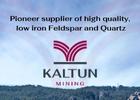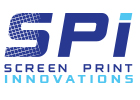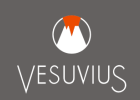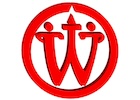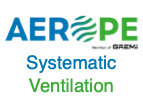Glass isn’t just glass anymore – it has become a smart component for a wide variety of applications. Laser technology makes it possible to meet customer- specific requirements precisely, quickly and cost-effectively.
A smart pane of glass should ideally screen, be transparent, darken, and lighten, with users being able to program these functions at any time of day or night. Whether it is in a public building, on a luxury yacht, in a car, or simply at home from the sofa, glass has to work. State-of-the-art technology during production is needed for this to succeed.
Rail passengers will be delighted if their high-speed train has windows that shield them from the sun’s rays while at the same time allowing mobile phone signals to pass through, and the same applies to office buildings, which contain a lot of concrete and steel. Smart glass façades ensure a comfortable interior climate, individually regulate light and shade to fit the requirements of employees, and permit mobile communication without interference, using technology that is invisible to the human eye.
Layer by layer
Glass designed to shield against electromagnetic radiation is always coated, for example with a low-e coating, to reflect thermal radiation. Laser beams make it possible to remove part of this coating, creating a filter structure or surface that is permeable to mobile phone signals or near-infrared light. 4JET microtech GmbH specializes in the micro-machining of very large, flat and curved panes of glass. Serial production of curved windshields demands high-resolution production (< 100 μm) and extremely short cycle times at volumes of up to 2000 x 1200 x 300 mm3. It is possible to remove entire areas of coating on these panes so that sensors have a clear view through the windshield at a cycle time of less than 30 seconds.
Another challenge for laser processing is posed by smart windows, which contain two electrodes between which there may be liquid crystals or electrochromic materials that are actively switched by the electrodes. When an electrical voltage is applied, these coatings either become opaque or darken. The laser can structure the electrodes into segments to make them appear more homogeneous. The track width during structuring can be as low as 10 μm, with the glass substrates measuring over 2 x 3 m2, and the processing system is designed to run on a production line 24/7.
Taking inspiration from sharks
State-of-the-art technology from 4Jet can cut fuel costs for aircraft and ships. Fine grooves about the diameter of a human hair – riblets – are incorporated into the paintwork to significantly reduce air resistance. This “shark skin” effect is achieved using LEAF (Laser Enhanced Air Flow) technology, which uses laser interference texturing, where the laser beam is first split and then recombined. This allows the oscillations of the electromagnetic fields of both partial beams to be superimposed in a controlled manner, resulting in a periodic pattern within a single laser spot. This method makes it possible to create 1 m2 of riblet surface in less than a minute.
Made to measure
Lasers need to meet entirely different requirements when used in the production of goblets. The aim here is to separate the cap from the goblet and create a pleasantly shaped mouth rim. In the conventional two-stage process, a small flame was first used to heat the glass locally, after which a CO2 laser took over. In the second stage of the process, thermal stress was induced to snap the cap off, which was done using a cold stream of air, for example, after which the cap then had to be removed mechanically. The original cutting process required extensive post-processing of the mouth rim such as grinding and flaming. These subsequent processes took a lot of time and resulted in additional costs, while also resulting in additional breakage.
This is avoided with laser systems in which Coherent’s SmartCleaveTM process is used. The company originally developed the process and the laser systems to process untempered and tempered flat glass. It then adapted this method for goblet glass production in cooperation with iPROTec. The goblet hangs in a fixture at the top so that the cap drops down at the end of the process. In the first step, an ultra-short pulse (USP) laser produces thin filaments in the glass in the infrared spectrum (1030 nm). One pulse corresponds to a filament with a diameter of 0.5 to 1 μm. Depending on the type of glass, the system can cut glass up to 3 to 4 mm in thickness in a single pass. The pulse duration, pulse shape and non-linear optical effects in the glass are decisive here. Glass up to a thickness of 12 mm can be perforated in this way, but several passes are required for thicker glass.
The thermal stress subsequently applied causes the glass to break along the filaments with high precision. In addition to this high accuracy, the quality of the edges is very high, with a surface roughness in the region of 0.5 μm. Depending on the application, this means that post-processing steps can be done away with, saving time and money and reducing the environmental impact. If the glass is too thick and too large or if the contours to be cut are too simple, the economic advantages of the process are lost.
SmartCleaveTM laser subsystems can be integrated into any existing system. The more demanding and intricate the task, the more suitable the process is. Even closed contours can be cut out, as long as the aspect ratio is not too large and the holes aren’t too small. For very intricate holes smaller than approx. 2 mm, Coherent offers another method: ablation and “milling” with ultra-short pulse lasers, all of which is contactless, toolless and can be integrated into other systems.
Who are you and where are you from?
Track and trace is another buzzword. Nanosecond lasers in the UV range, USP lasers in the green range or in the red range are particularly suitable for structuring and marking glass. The shorter the pulse, the less damage is done to the glass because no heat is transferred into it. The structures are formed in the micrometer range. If 100 percent traceability and identification of products is possible, it will be more difficult to put counterfeits on the market, increasing safety for users and consumers.
Faster processing and higher edge quality with the laser sword
Cutting laminated safety glass is still a time-consuming task in comparison to float glass. One time and cost driver is the time it takes to heat the laminated film after breaking. As a rule, an infrared heater is used for straight cuts, which heats the film so that it can be separated mechanically in the next step. Heating is comparatively time-consuming and is not particularly precise, but covers a broader area, which can cause delamination at the edge of the glass. HEGLA GmbH & Co. KG is already experienced with laser technology during mold cutting. In collaboration with the laser specialists at HEGLA boraident, it came up with the idea of accelerating the heating process for straight cuts using a diode laser and at the same time improving the edge quality. The results are impressive.
The “laser sword” heats the foil precisely where it is needed with individual laser diodes, which are positioned in a straight line. Thermoplastic heating is concentrated on where the cut is required with even greater precision than before. Numerous parameters are used to individually control the required power density, including the diode current and spacing as well as the oscillation path and the oscillation speed. The heating process is thus more than halved, allowing the user to save a considerable amount of time and money when processing large quantities, and delamination is a thing of the past.
Diode lasers also have a longer service life than infrared heaters. Even special foils made of harder materials are easy to cut using this laser technology. This new “cold heating process” adds value to the product wherever edges of cut laminated glass can be seen and in structural glazing. In serial cutting in particular, diode laser heating could replace the infrared tube as a heat source and quickly recoup the additional investment simply due to the significantly higher productivity with otherwise the same system.
The new heating technology was presented for the first time at Vitrum in Milan, where it was integrated into a prototype system for demonstration purposes.





